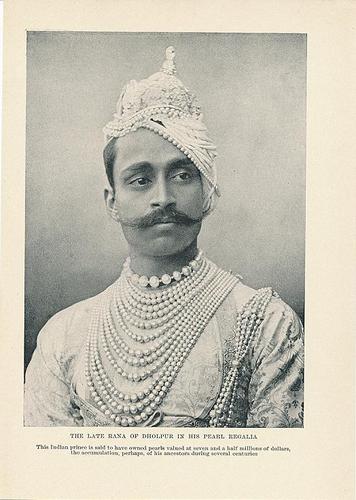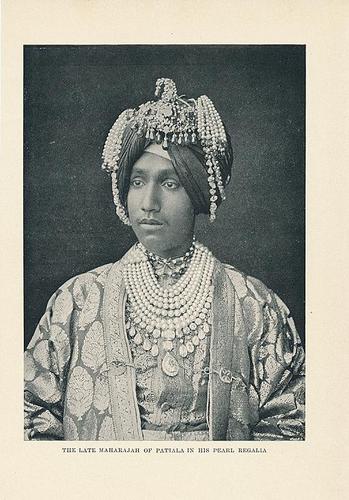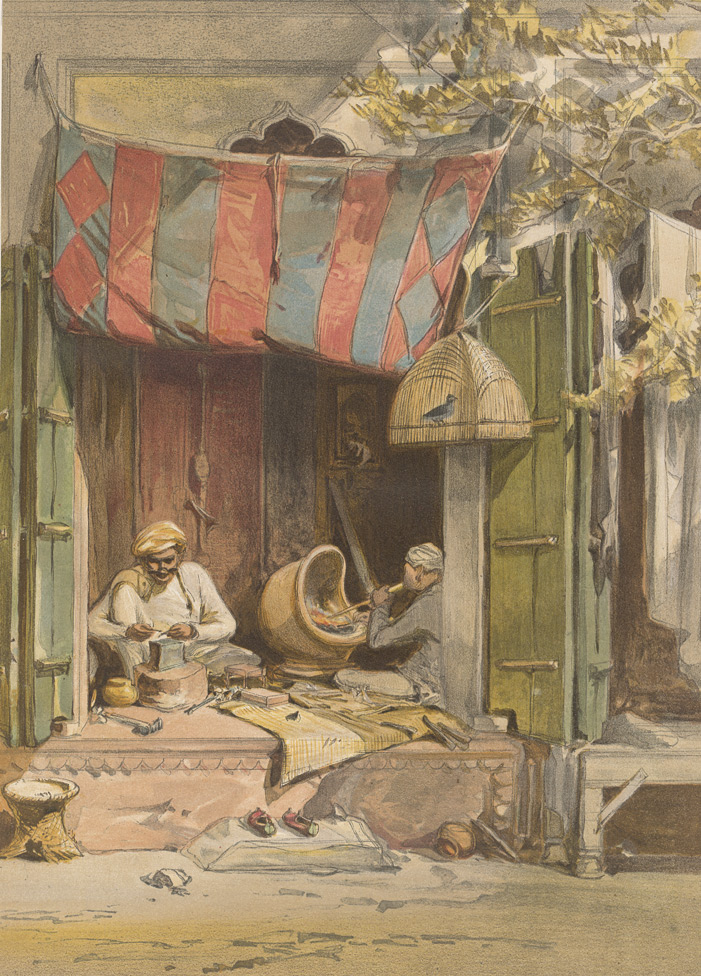FWP:
Compared to the dense, unresolvable knot of meanings in {169,3}, how clever, controlled, and charming this little verse is. It's really a nicely turned display of wit. It has a very enjoyable double meaning, but not a triple or quadruple or indefinitely complex one. (We deserve a break.)
The first meaning is the one the commentators all emphasize. The pearl-seller is very lucky. Since astrological influences pervade the world of the ghazal, this means that his 'star is in the ascendant', his star is at a 'height' that brings him good fortune. He is lucky because the beloved has condescended to wear his pearl in a necklace, and even luckier because he seems perhaps to have the chance actually to see her doing so. The commentators tend to insist on the poet's jealousy/envy of him, but even if we don't overdo that possibility, the very idea of the pearl-seller's own (metaphorical or real) presence-- so un-obvious, so unnecessary or even inappropriate-- adds another implicit gaze besides the speaker's, and thus creates a piquant complication in the verse.
The second meaning hinges on the beloved's tallness; for more on this, see {38,4}. The beloved is wearing the pearl not in a long garland such as the commentators mostly envision-- they use mālā -- but specifically in a 'knot' at her neck, something like a choker or collar. Thus the pearl-seller's finest pearl, the 'star' of his collection, is at a 'height' off the ground that moves the lover to rapturous admiration of the beloved's tall, elegant, cypress-like stature.
Moreover, the beloved herself is also perhaps a pearl-'displayer'; on the meaning of farosh as 'displayer', see Faruqi's commentary on {67,2}. So conceivably the pearl-seller doesn't have to enter into it at all; the speaker could simply be admiring both the beloved's own height, and the 'height' of her-- or his, since pearls were worn by both sexes-- good fortune and wealth.
Note for grammar fans: ḳhubāñ is technically plural, but it often seems to be used as a kind of abstract singular. And dekhnā , the infinitive, can of course also act as a neutral imperative.
For another verse that plays with the beloved's height, see {53,13x}.
 |
 |

Nazm:
dekhnā has two meanings: one is an imperative, addressed to a listener; and the other is an infinitive, and in that case 'for the pearl-seller to see' is meant, and he has expressed jealousy/envy of him. (189)
== Nazm page 189